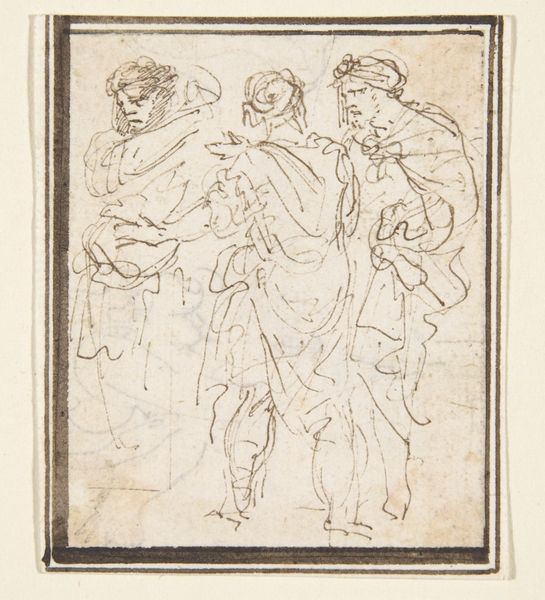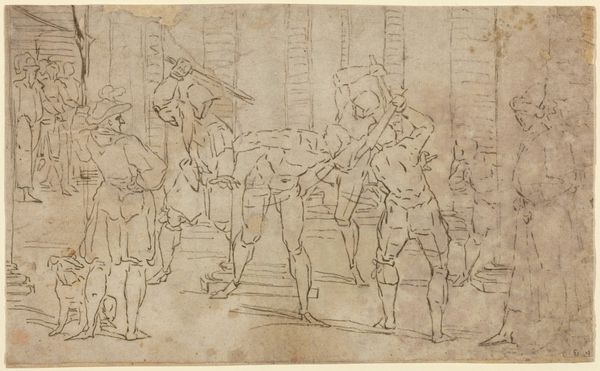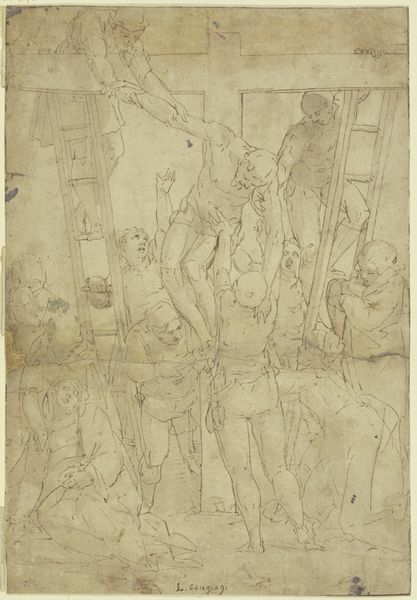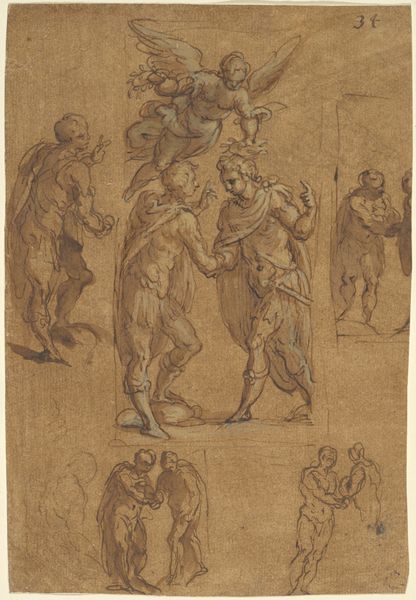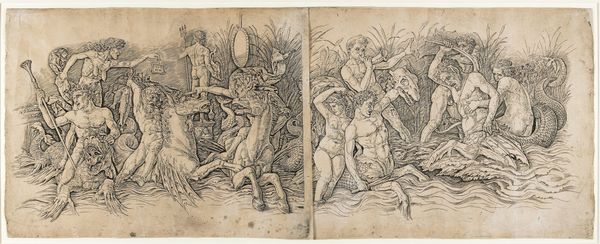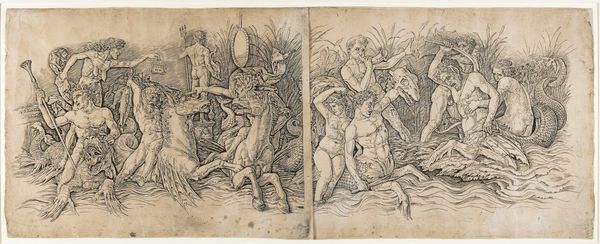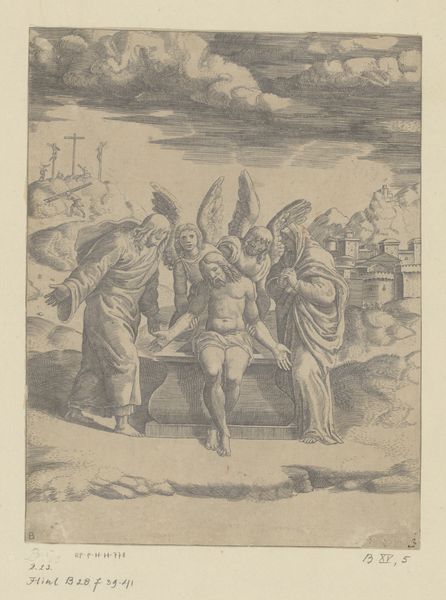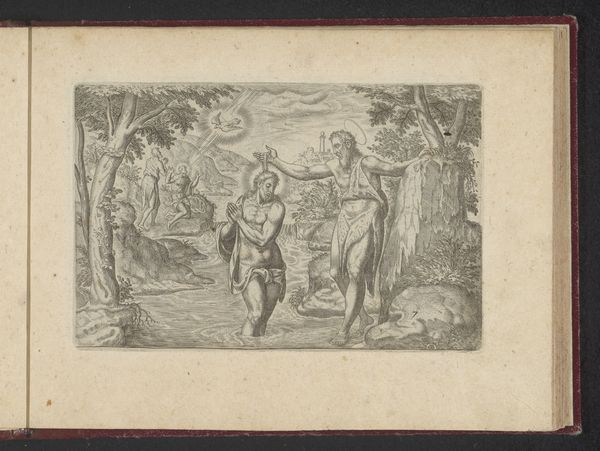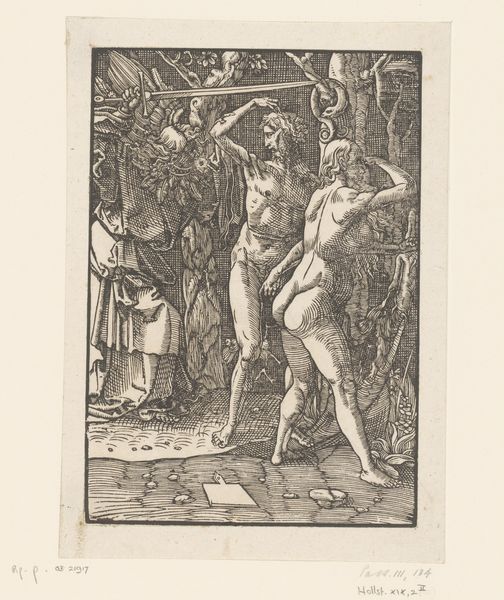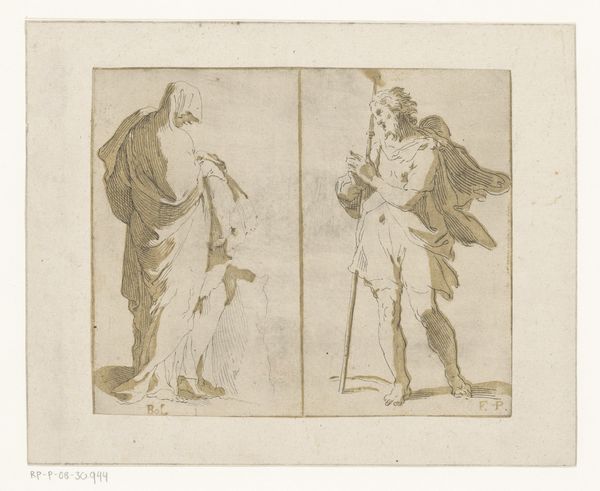
Martyrdom of Saint Sebastian with Two Archers 1470 - 1480
0:00
0:00
drawing, print, ink, pen
#
portrait
#
drawing
#
blue ink drawing
# print
#
pen sketch
#
figuration
#
ink
#
pen
#
history-painting
#
italian-renaissance
Dimensions: Plate: 8 3/8 × 7 3/4 in. (21.3 × 19.7 cm) Sheet: 11 1/4 × 8 7/16 in. (28.6 × 21.4 cm)
Copyright: Public Domain
Curator: Looking at this artwork, I immediately feel a sense of vulnerability amidst violence. The delicate lines of the ink contrast sharply with the brutal scene depicted. Editor: This is an anonymous piece titled “Martyrdom of Saint Sebastian with Two Archers”, created between 1470 and 1480 during the Italian Renaissance. Currently, it resides at the Metropolitan Museum of Art in New York. It is rendered using pen and ink. What's interesting about it is its reflection of shifting power dynamics and social values of the time. Curator: Exactly. The martyrdom of Saint Sebastian, historically depicted as physical endurance in the face of oppression, has implications for queer identity studies too, considering that interpretations frame the image through lenses of desire and the erotic. The archers' expressions – or lack thereof – also adds a layer to consider. Editor: Right, the saint became an important figure during the plagues that ravaged Europe in the 15th century. What do you think the presence of the two archers reveals about attitudes toward persecution and perhaps even state power in that era? Are they instruments of a just authority or cruel, indifferent enforcers? Curator: That’s it. This portrayal emphasizes the psychological burden of enacting violence, perhaps suggesting an unease with power that's relevant today. How does this narrative connect to our ongoing societal conversations around who gets remembered and why? Editor: By examining the artwork through the lens of its socio-historical background, it invites viewers to re-evaluate how societal narratives, power and resilience have played out, in this image and more broadly, and continue to impact the reception and creation of art today. Curator: Ultimately, what's striking is that even in this supposed moment of ultimate sacrifice, Sebastian's posture feels oddly defiant, questioning the terms and the ethics of violence, raising awareness on current affairs about victim blaming, for example. Editor: I think exploring these complexities reminds us how the past still reverberates in our present moment, challenging us to create a future society free from similar persecutions.
Comments
No comments
Be the first to comment and join the conversation on the ultimate creative platform.
